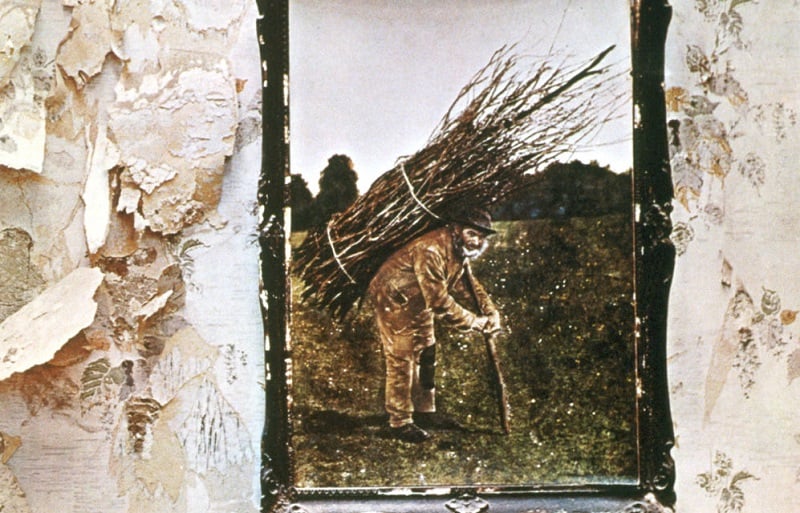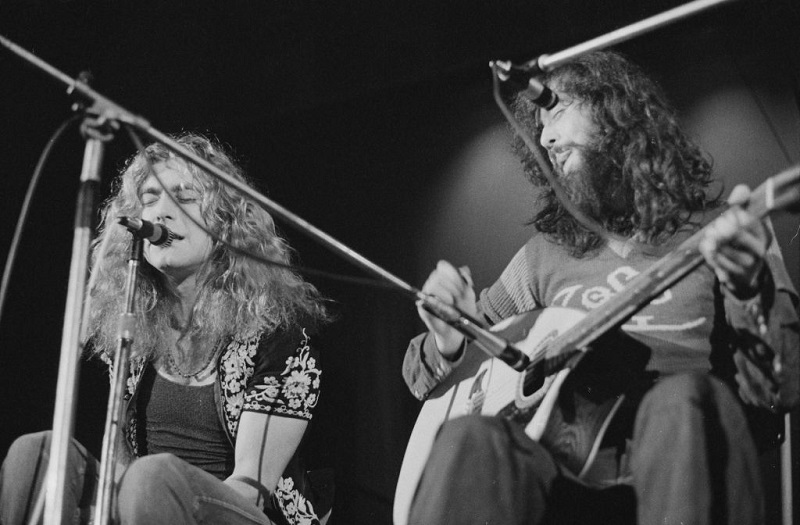The Statement Led Zeppelin Was Making With the Cover of ‘Led Zeppelin IV’
Early in the band’s epic run, Led Zeppelin made it clear they would play by their own rules. By the time the group released Led Zeppelin II (1969), a policy of no TV appearances and no singles was in place. If you wanted to see Zep or own a copy of their music, you’d have to buy an album or a concert ticket.
As for publicity, the wily Peter Grant had his ideas as the band’s manager. And Atlantic Records knew it had a cash cow on its hands. Zeppelin’s pulverizing live performances did the rest of the heavy lifting in that regard.
But Zeppelin’s rise to the top of rock didn’t come without stumbles. Led Zeppelin III confounded critics and, though it sold millions of copies, stood as a commercial disappointment for the band. (Everything is relative here.)
That sent Jimmy Page and the band back to the woodshed. When they returned with the songs that would make up Zep’s stunning fourth album, they only released the tapes to Atlantic on one condition: that the record go out with no title and no “Led Zeppelin” anywhere on the cover.
Zeppelin ‘wanted to rely purely on the music’ with its 4th album

If you wanted to send a major record label into a panic circa 1970, you would do just as Zeppelin did. Page and the band insisted there be no band name anywhere (including on the album cover’s spine). Naturally, fans wouldn’t find a title on the cover, either.
What about a picture of the four band members? Surely, Zep would want their fans to see them there (as on Led Zeppelin II). No, the band decided the cover would be painting of an old man carrying a bundle of tree twigs on his back. (The painting hung on a crumbling building wall.)
On the back cover, all you say was the ruins of a building and some slums in the distance. Considering Zeppelin III wasn’t a blockbuster and Zep hadn’t toured in about nine months, Atlantic considered the strategy “professional suicide.” But the band didn’t budge.
In Hammer of the Gods, Stephen Davis quotes Page outlining the thought process behind the packaging. “We decided […] we would deliberately downplay the group name, and there wouldn’t be any information on the outer jacket,” he said. “What mattes is our music. We said we just wanted to rely purely on the music.”
The 4 symbols on the album sleeve made the Zeppelin legend grow

Led Zeppelin even took the no-name concept to the album’s sleeve. On one side, buyers got the lyrics to “Stairway to Heaven.” As for the other side, all you saw were four symbols on top and the song titles below. That part of the legend (Davis called it “a secret society”) would soon begin to grow.
“After all this crap that we’d had with the critics, I put it to everybody else that it’d be a good idea to put out something totally anonymous,” Page said in 1977. “At first I wanted just one symbol on it, but … since it was our fourth album and there were four of us, we each chose our own symbol.”
Then came the music. If you weren’t knocked out by opening tracks “Black Dog” and “Rock and Roll,” your jaw dropped when “Stairway” closed out the first side. As for Side Two, it was more of Zeppelin at its best with “Misty Mountain Hop,” “Four Sticks,” and “When the Levee Breaks.”
As for the acoustic work the critics panned on III, Zep delivered a double gut-punch with “Going to California” and “The Battle of Evermore.” The statement was clear: They were the best rock band on the planet and their new record would sell in a brown paper bag. Some 37 million sales later, no one can question the method.
Also see: When Jimmy Page Nearly Started Led Zeppelin With The Who’s Keith Moon


